
The development of our engineering activities accompanies that of our laboratories and test centres.
The resulting synergies contribute to a pragmatic approach capitalizing on feedback from the real world of testing.
Our teams are familiar with the reality of the tests associated with engineering projects and their context and challenges. They work in harmony with the teams in our laboratories and test centres, which enables us to be one of the few players on the market to offer global support, properly sized and without additional management costs.
Each of your needs is unique, but our range of solutions is wide and diversified.
Our studies and engineering are carried out before the tests take place, after the tests, or in addition to the tests. In the 3 situations, whether you are in a regulatory or qualification context, our studies and engineering enable you to anticipate the consideration of testing requirements and thus to better control the consequences in terms of deadlines and costs.
In order to give you an overview, the tabs below present a non-exhaustive list of our know-how within the Emitech Group
Qualification campaigns are generally associated with equipment dedicated to sectors meeting particularly demanding environments: nuclear, rail, marine, automotive, defense, aeronautics, space. The level of requirement is all the higher when the equipment is associated with a safety concept. These environmental requirements frequently fall within the scope of a specification specified by a client to its supplier.
In this context, our engineering departments aim to ensure the right balance between the constraints that must be met and the real requirements arising from a product's life profile, but also between the adequacy of the design and the technical solutions deployed vis-à-vis these constraints.
The V-model representing the development stages of a product and the interactions between the design phase and the validation phase allows us to better visualize the levers deployed by our various engineering departments to optimally qualify a material.
Our engineering departments are at your disposal to design and qualify a product while respecting your initial deadlines and opting for design and technology choices sized to the most accurate. Our engineering complement our training and testing offerings.
This support potentially integrates all aspects of the consideration of the different environments from the design phase to the validation phase: the implementation of the tests themselves, but also the preparation work upstream, the follow-up during the tests and the exploitation of the results downstream.
Depending on your expectations, the project management can be complete or partial:
Our teams are at your disposal to make recommendations appropriate to your needs and expectations.
Project management is an important factor in setting up the conditions for the success of your qualification campaign
To ensure reproducibility, tests are standardized with levels of requirements derived from standardized life profiles.
Test campaigns are therefore generally built around values of environments (electromagnetic or physical) to be applied according to expected conditions of use. The values retained are in general very high and demanding and sometimes badly adapted to the real needs.
It is increasingly common to encourage specifications to be written from measurements of the real environment. This customization of the tests is carried out in 3 stages:
Our test customization services cover both electrical and electromagnetic environments as well as climatic and mechanical environments.
The customization of the tests allows:
The approach is based on the simulation of physical phenomena on virtual models (CAD). Applied during the design phase of a piece of equipment, calculations make it possible to avoid design errors (under or oversizing of technical solutions), to validate design choices or even technologies.
Finite element calculations simulate the behaviour of a part subjected to the stresses defined in its functional specification. They make it possible to optimize the architecture of the equipment being designed in order to make it compliant during qualification in an extremely efficient cost/time approach compared to a traditional testing iteration methodology.
In the context of physical and physochemical environments, test virtualization concerns vibration, mechanical and thermal environments.
The main types of calculations for these environments are based on :
Calculations in electromagnetic environments mainly concern the influence of radiofrequency transmitters (radar, communications systems, etc.), the visualization of radiated emissions generated by a subsystem, the evaluation of shielding efficiency, the estimation of coupling phenomena (immunity) or the calculation of current distribution of a direct lightning shock.
Applied during the design phase of a piece of equipment, environmental simulation makes it possible to
It is recommended to take into account the test equipment at this stage.
In the implementation of tests in physical environment (mechanical, climatic and physico-chemical), the test equipment is an essential interface between the test means and the specimen to be tested.
The test tools are designed and manufactured by our design offices. They must allow the equipment to be tested to be adapted with the means to be implemented without interfering with the constraints to be applied.
According to your needs in frequencies, onboard mass, dimensions..., we optimize the design of the test equipment using digital simulation and we have a range of materials (steel, aluminium, magnesium) and heat treatment adapted.
The design of an adapted tooling represents a double challenge:
Writing a QTP includes:
Writing a QTP allows you to:
The approach is identical to the implementation of numerical calculations during the design phase of a hardware.
It is at this stage:
The test virtualization used in the evaluation phase allows:
Taking into account the context in which the equipment is used results in qualification requirements. This is the case for equipment used in defence, but also in transport (automotive, rail, aeronautics, etc.) or in very specific contexts (marine, nuclear, space).
The public authorities also set safety requirements for users (their families and property), good management of the frequency spectrum and compatibility of operation between equipment required to operate in close proximity to each other, particularly in terms of electromagnetic compatibility.
While the bases of the requirements are common, the resulting regulations and standards may be different, as may the levels of requirements and the procedures for demonstrating conformity at the time of marketing.
As regulations evolve regularly, it is important to ensure that products remain compliant with the specific requirements of each target market during the product life cycle. It is important to note that targeting new markets can be synonymous with complementary requirements that can have impacts right through to product design. Anticipating the various target markets from the initial development phase of a product is therefore essential even if the initial marketing targets a limited number of countries.
Our studies and engineering in the regulatory context tend towards one main objective, that of securing your deadlines and conditions for placing your equipment on the market:
The knowledge of the testing context at the early stages of your equipment's development makes it possible to secure the marketing schedule. You have an overview of the specificities of the approval procedures, the consequences in terms of component design and sourcing, the key phases that can cause delays, the steps that can complete the tests to demonstrate your compliance.
Used as a tool for our studies and engineering, our numerical simulations run on computing stations up to 7 Tflops
They are implemented in a pragmatic approach based on feedback from our laboratories.
The tools at your disposal are the following:
Our simulations use:
Frequency calculation
Calculation in time
Our simulations use:

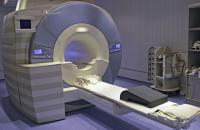

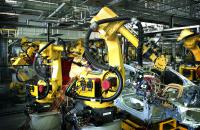

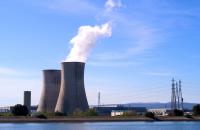
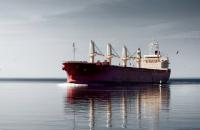
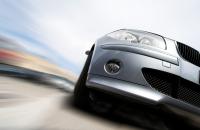
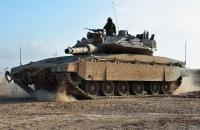

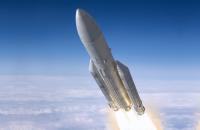

Emitech Group - Legal information